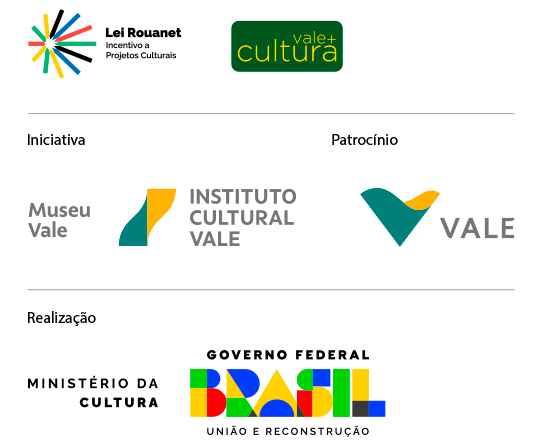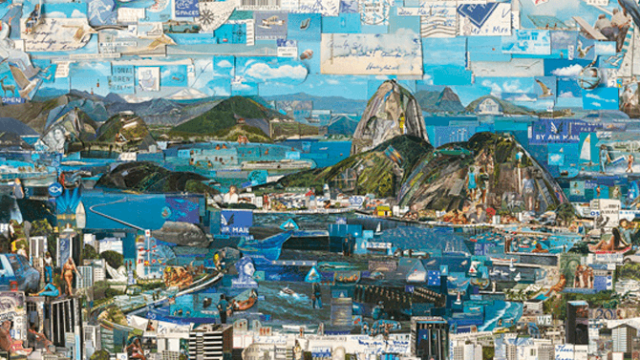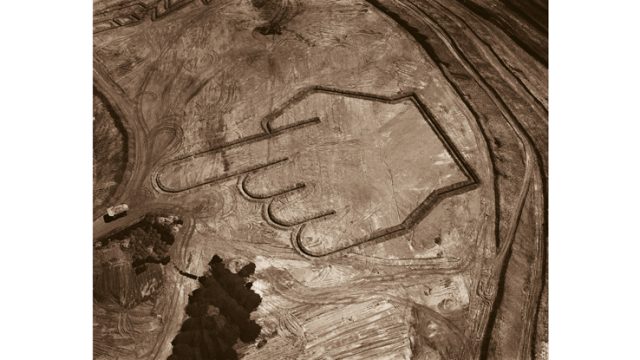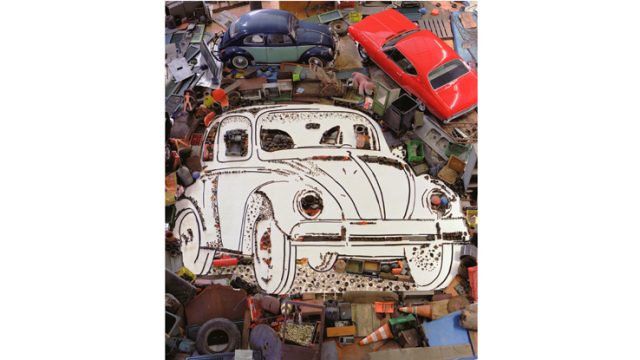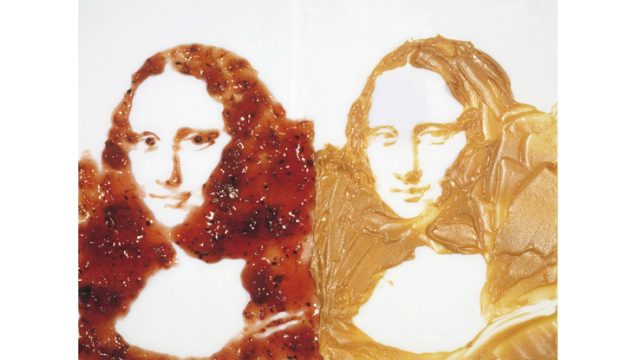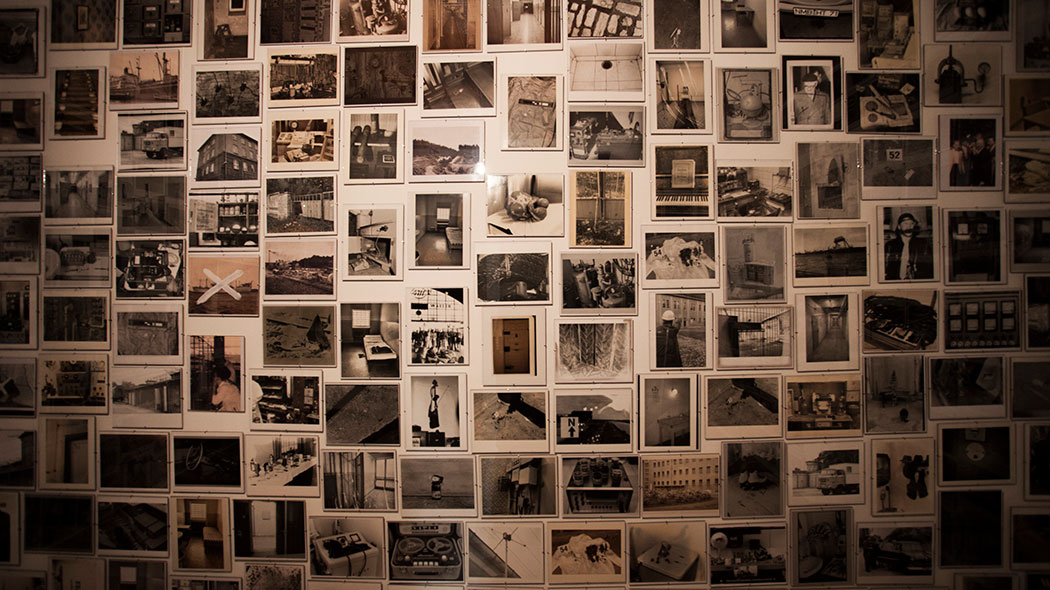
One hundred works by the artist, including photos of images made with scrap, soil, diamonds, and even food, will be on display for the public in Espírito Santo from October 16th at the museum’s warehouse. The exhibition includes a documentary room and the launch of the catalog. The temporary exhibition room at the Vale Museum will feature an illustrated chronology, behind-the-scenes of the works, books and catalogs for public consultation, and a daily screening at 3:00 pm of the film ‘Waste Land (Lixo Extraordinário)’.
Faces, postcards, mythological figures, ordinary people, all drawn and detailed with materials as diverse as beans, chocolate, pasta, diamonds, sugar, scrap, jelly, and peanut butter, transform into works of art that may be what they seem, but never just that.
The VIK MUNIZ exhibition arrives at the Vale Museum on October 16, 2015, and runs until February 14, 2016, following a successful tour of Latin America (currently being exhibited at the Museum of the University of February 3 (MUNTREF), Buenos Aires).
However, at the Vale Museum, it will be accompanied by recent works by the artist, in addition to the 33 photographs that make up Earthworks. In Earthworks – the iconic work of the exhibition – the Vale mines in Carajás and Minas Gerais were the stage for its construction in 2002.
“A work as complex as Earthworks, it required precision, the commitment of many people, and an incredible logistics structure. And now, more than ten years later, it is precisely the Vale Museum that invites me to exhibit in Espírito Santo”, notes Vik Muniz.
“I find interesting this network of recurrences, interactions that multiply art”.
In the vastness of open-pit mining areas, Vik Muniz, in partnership with Vale do Rio Doce, carried out the series of photographs. From a helicopter, the artist commanded the operation and photographed drawings made with tractors and excavators in large mining areas of the company. With GPS, the traced lines were marked on the ground, indicating where the backhoes should dig.
The photographs seem like documentation of marks left by extraterrestrials in non-urban areas but with a certain irony regarding everyday objects: hanger, lamp, scissors, spoon, dice, and metal clip, among others. The work refers to monumental interventions in natural landscapes (Land Art) by artists like Robert Smithson (1938–1973). In the series, Vik plays with the viewer’s perception, alternating photos of models with others taken on Vale’s land, mixing works of large and small scales.
In the VIK MUNIZ exhibition, several landmark works by the artist are present, such as: Sugar Children, a series of faces of boys, sons of Caribbean sugar mill workers, drawn with sugar; images of diamonds, recreating celebrity faces, redrawn with thousands of diamonds; Postcards from nowhere, which displays, at the very least, unusual postcards from various cities around the world. Also noteworthy is the series of recreations of original works by great painters, such as Caravaggio, always with the support of unlikely materials.
“It’s an old dream to have Vik Muniz here”, celebrates Ronaldo Barbosa, director of the Vale Museum and responsible for inviting the artist.
“He is an artist who is very much in the present, with a renewing and dynamic work, in tune with the most ethical trends within contemporary art today”, he summarizes.
Art in the Crosshairs
– It’s no problem to use chocolate, it’s good. The bad thing is the ink, because you never really know what it contains – jokes the artist, who paved the way for an international career in art after moving from São Paulo to New York. It all started when he broke up a street fight and was shot in the leg by the person he had intervened against. To avoid a report, the person offered him a hefty reward in cash.
– I accepted and decided to use the money to buy a plane ticket and get myself to New York – the artist explains. Once there, he fully embraced the cultural effervescence of the metropolis and discovered that he could use a little bit of everything to materialize his talent.
It was 30 years in the USA, but always here and there too, working in various countries. Today, Vik lives in Rio and is very involved in social projects, such as the NGO Spectaculu. In 2013, he started the construction of the Vidigal School with his own resources, offering children in the literacy phase the opportunity to learn art and technology through play, using a teaching methodology resulting from a partnership between Vik Muniz and the Massachusetts Institute of Technology (MIT) in the United States.
– It’s a ‘Bauhaus’ for little ones, he jokes with a very serious smile.
The artist
Transforming with attitude
Vik Muniz, 53 years old, a versatile artist who is among the most respected worldwide, is a simple Brazilian who doesn’t care about labels, has no prejudice against the market, and likes to share art, technology, and resources to offer many the possibility of art.
– I don’t believe in art that originates from an idea or political message that soon turns into art. Thinking about making art to defend the oppressed is not making art; it’s making politics. If, in the process of making art, of seeking to materialize an artistic idea, it is possible to convey a political message, that’s something else – he clarifies in a recent interview with Alberto Armendáriz, correspondent in Brazil for the Argentine newspaper La Nación.
In tune with his time, he has just inaugurated, at the Venice Biennale, the installation Lampedusa, a more than concrete allusion to the drama of refugees in the Mediterranean, an issue that concerns him a lot. Lampedusa will be auctioned at the end of the Biennale. Vik will donate the proceeds to an NGO focused on assisting refugees.
The artist and his process
Born in São Paulo, Vik Muniz was raised in the Jardim Panamericano community in the city. With interests as diverse as advertising, scenography, theater, philosophy, and literature, he achieved artistic recognition with photographs of his large-format works.
As a creator, he likes the viewer to understand the process of how his works were made.
– This allows the viewer to establish a temporal relationship – he explains. – People usually think of images as something instantaneous, immediate, but the image that inspires you to imagine how it was made leads you to think about the process through which it was created. And that already gives you the possibility to think about other things: the intention of the image and even philosophical conclusions about what you are seeing – he enthuses.
Image, art, and advertising
In addition to having his works in collections as important as Tate Modern in London and museums like the Metropolitan, MoMA, and the Guggenheim in New York, Vik Muniz also created TV openings, such as the one for the soap opera Passione on Rede Globo. His work was also documented in the film “Waste Land” (2010), directed by Lucy Walker and co-directed by João Jardim and Karen Harley, nominated for an Oscar. In 2014, for the World Cup, Vik directed the documentary about football “That is not a Ball”. He believes that the artist today can and should get involved with all the possibilities that images and technology offer. – Andy Warhol already explored this contemporary side, worked with the power of images, which I consider a very valid artistic attitude. – And he adds: – I am interested in material art, of course, because basically what I do is objects, but I am also interested in my images having transcendence beyond the material, establishing a relationship between the work and people’s sensitivity.

Fale conosco
Redes sociais

